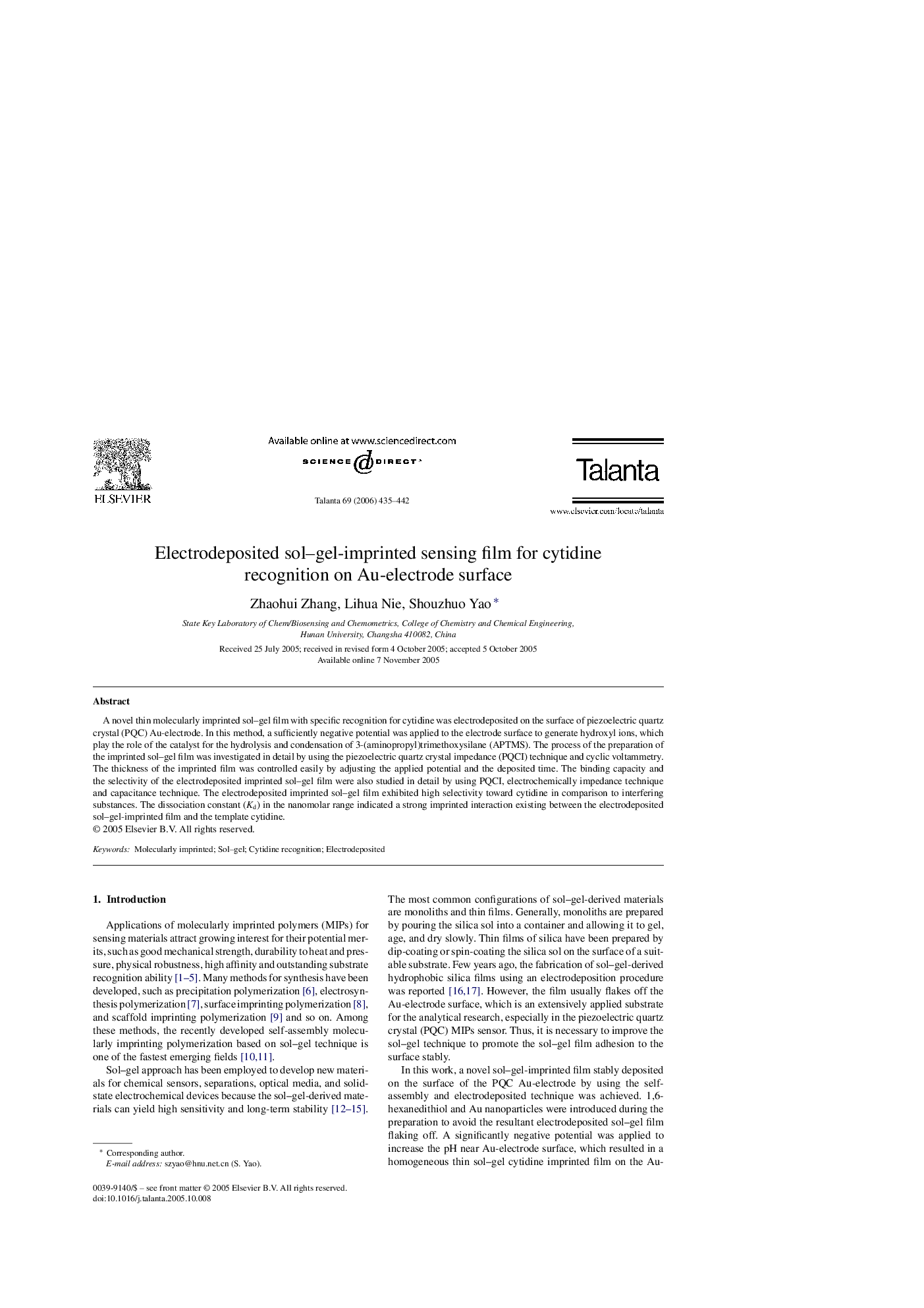| Article ID | Journal | Published Year | Pages | File Type |
|---|---|---|---|---|
| 1247338 | Talanta | 2006 | 8 Pages |
A novel thin molecularly imprinted sol–gel film with specific recognition for cytidine was electrodeposited on the surface of piezoelectric quartz crystal (PQC) Au-electrode. In this method, a sufficiently negative potential was applied to the electrode surface to generate hydroxyl ions, which play the role of the catalyst for the hydrolysis and condensation of 3-(aminopropyl)trimethoxysilane (APTMS). The process of the preparation of the imprinted sol–gel film was investigated in detail by using the piezoelectric quartz crystal impedance (PQCI) technique and cyclic voltammetry. The thickness of the imprinted film was controlled easily by adjusting the applied potential and the deposited time. The binding capacity and the selectivity of the electrodeposited imprinted sol–gel film were also studied in detail by using PQCI, electrochemically impedance technique and capacitance technique. The electrodeposited imprinted sol–gel film exhibited high selectivity toward cytidine in comparison to interfering substances. The dissociation constant (Kd) in the nanomolar range indicated a strong imprinted interaction existing between the electrodeposited sol–gel-imprinted film and the template cytidine.
